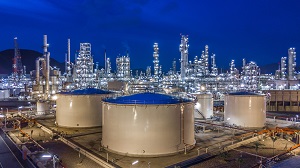Update to the EPA RMP Rule. Part 3: Siting

This is the third post in our series in which we review the proposed updates to the EPA’s (U.S. Environmental Protection Agency) Risk Management Program (RMP). The original post is located here.
This series complements the similar series for OSHA’s Process Safety Management (PSM) standard. The update process for the EPA rule is described in the post The EPA RMP Updates. As time permits, we will review and analyze each of the EPA’s proposed changes. We will also compare them with the comparable OSHA update — where one exists. An index of the updates so far is provided here.
The proposed change that we consider in this post is to do with root cause analysis. (All comments refer to Scope 3 requirements.)
Prevention Program (Subparts C and D) Siting
(1) Emphasizing that facility siting should be addressed in hazard reviews and explicitly define the facility siting requirement for Program 2 hazard reviews and Program 3 process hazard analyses. (2) Requiring a justification in the Risk Management Plan when facility siting hazard recommendations are not adopted.
OSHA Update
OSHA uses the words ‘Facility siting’ as part of paragraph (e) of its PSM standard. It provides no detail. The word is not mentioned in the proposed updates. The agency does not mention layout in either document.
Siting
The EPA states that it is requesting comments of the following.
-
The Agency’s proposed approach.
The Agency does not provide guidance to do with the topic of Siting.
Siting and Layout
The words ‘siting’ and ‘layout’ are often used interchangeably but, strictly speaking, they have different meanings. Siting is concerned with the location of a facility. For example, if a company is planning on building a new chemical plant, executive management may consider sites in Texas, Mexico or China. Once construction starts, it is very unlikely that that decision will be changed.
When choosing a site, attention should be given to the potential for floods, snowfall, wind severity and earthquakes in the area. Site selection should also consider availability of raw materials, customers, and transportation hubs. Consideration should also be given with regard to climate change — a topic identified by both OSHA and the EPA.
Layout is to do with the location of equipment items at the selected site. This is probably what the EPA is asking companies to consider. Layout considerations start with major operating units within a facility. For example, in on oil refinery these would be units such as the Cat Cracker, Alkylation and Boiler House. Once the location of these major units has been decided upon, then layout decisions can be made with respect to individual equipment items such as distillation columns, heat exchangers and fired heaters.
The Hazards Analysis
If a PHA team does decide that a piece of equipment needs to be relocated, then the follow-up action is likely to run into two difficulties.
The first difficulty is that moving large equipment items, along with all the associated piping and instrumentation, is likely to be very, very expensive. The second concern is that there may not be sufficient space at the site to move equipment items further away from one another. This problem is particularly severe on offshore platforms and drilling rigs. (The lack of available real estate is likely to be the response to the to the second part of the proposed change that discusses the justification for not taking action.)
Industry Standards and Publications
There are not many industry standards or guidance documents do with siting and layout. API Recommended Practice 752 Management of Hazards Associated with Location of Process Plant Permanent Buildings is often referenced. The Center for Chemical Process Safety book on the topic is Guidelines for Siting and Layout of Facilities. Certain industries have their own siting standards. For example, NFPA 59A provides a standard to do with the siting of Liquefied Natural Gas facilities.
We have also published various books, ebooks and Safety Moments to do with siting and layout. They include:
-
Safety Moment #73: Storage Tanks in the Process and Energy Industries,
-
Safety Moment #64: Equipment Spacing (Hydrocarbon Storage Tanks), and
